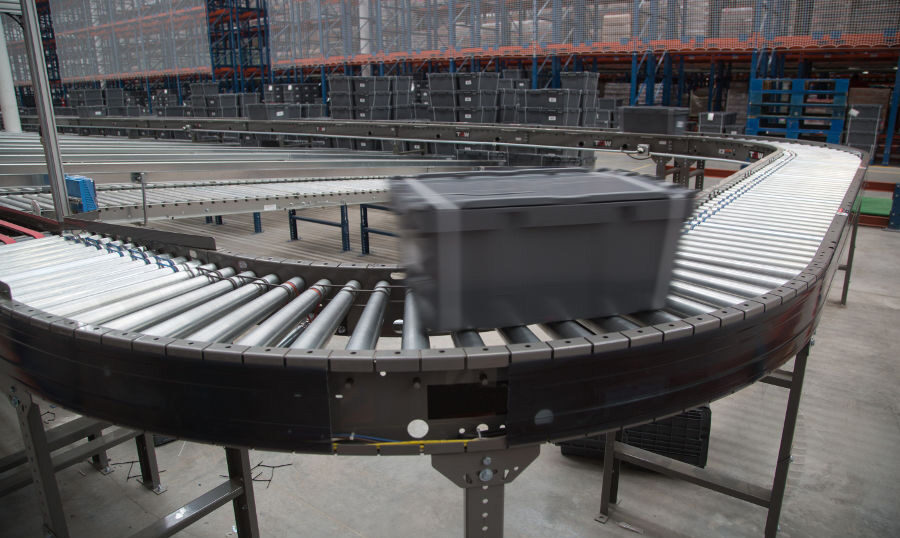
CONVEYOR
Boost efficiency and reduce manual labor with gravity-fed or electric-powered conveyor systems for seamless material flow.
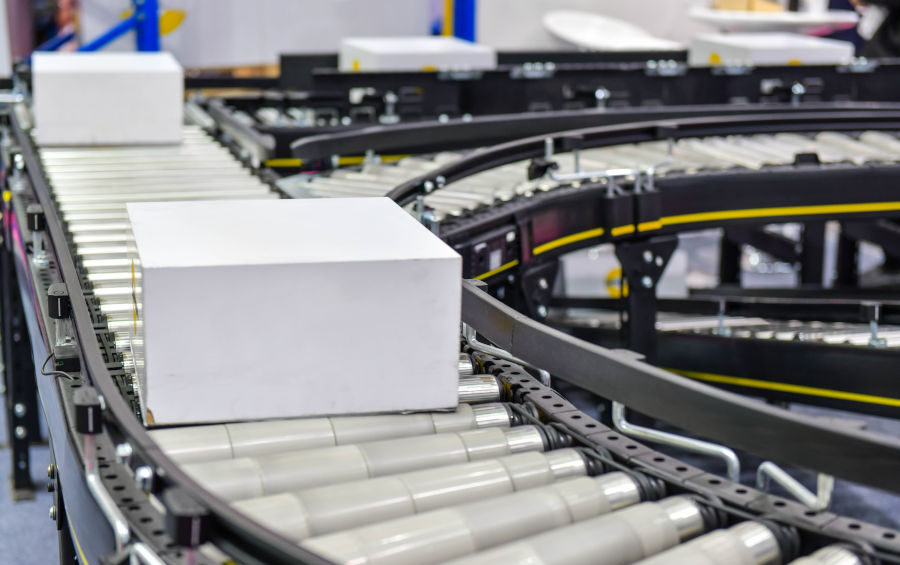
STREAMLINE YOUR PRODUCTION FLOW
Conveyor Systems are used to safely and efficiently transport materials from one location to another within your facility. The materials travel down the conveyor line on either rollers or belts, loading or unloading materials in various areas, until they reach their final destination.
These conveyor systems can be either gravity or electric powered, and help to reduce manual labor and increase productivity and process efficiencies within your facility.
COMMON APPLICATIONS FOR CONVEYOR SYSTEMS
ASSEMBLY LINES
ORDER PICKING
STAGING OR ACCUMULATION
TRANSPORT OF PRODUCT
VERTICAL MOVEMENT
PACKAGING & SHIPPING
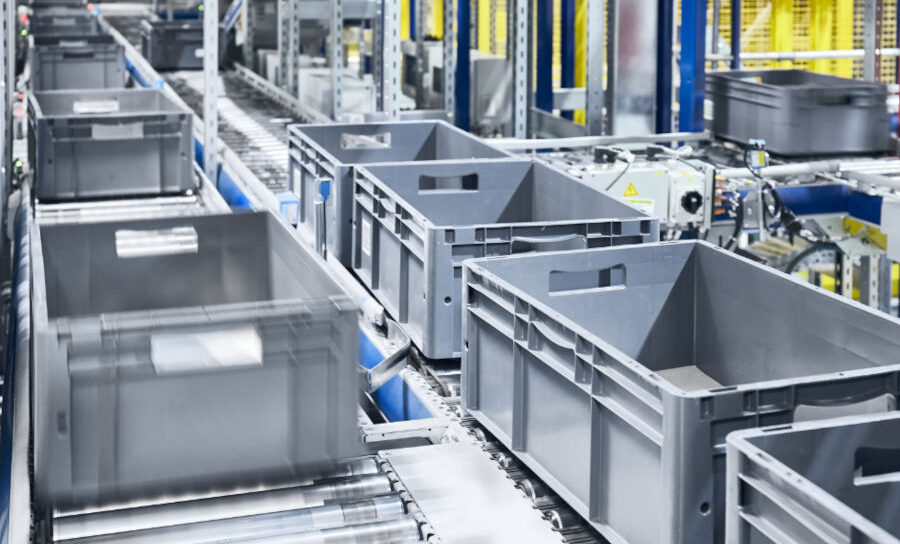
BENEFITS OF CONVEYOR SYSTEMS
IMPROVED PRODUCT FLOW & PRODUCTIVITY
DECREASED LABOR
INCREASED SAFETY
IMPROVED ERGONOMICS
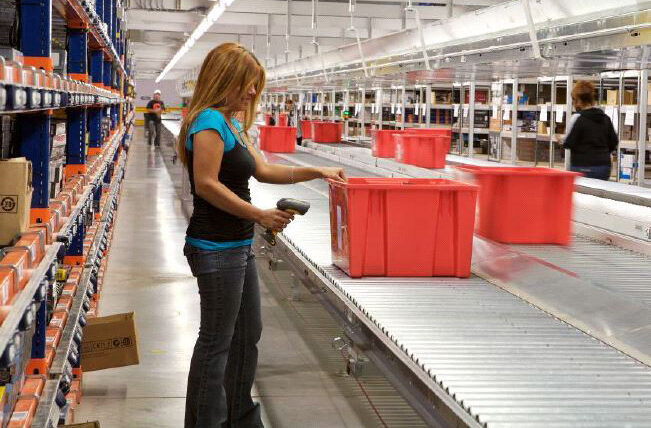
GRAVITY CONVEYOR SYSTEMS
Gravity conveyor is also known as a non-powered conveyor as it uses the force of gravity as its power source. It is the simplest style of conveyor and is commonly used in packaging and pallet handling, assembly, kitting, and truck unloading areas. They consist of a series of evenly spaced metal rollers that facilitate the movement of materials from point A to point B.
The conveyor is usually constructed at a slight incline and uses the force of gravity or manual force to move materials down the conveyor line. Gravity conveyor systems are a popular choice due to their simplicity and affordability.
GRAVITY ROLLER CONVEYOR SYSTEMS
GRAVITY WHEEL CONVEYOR SYSTEMS
CHUTE CONVEYOR SYSTEMS
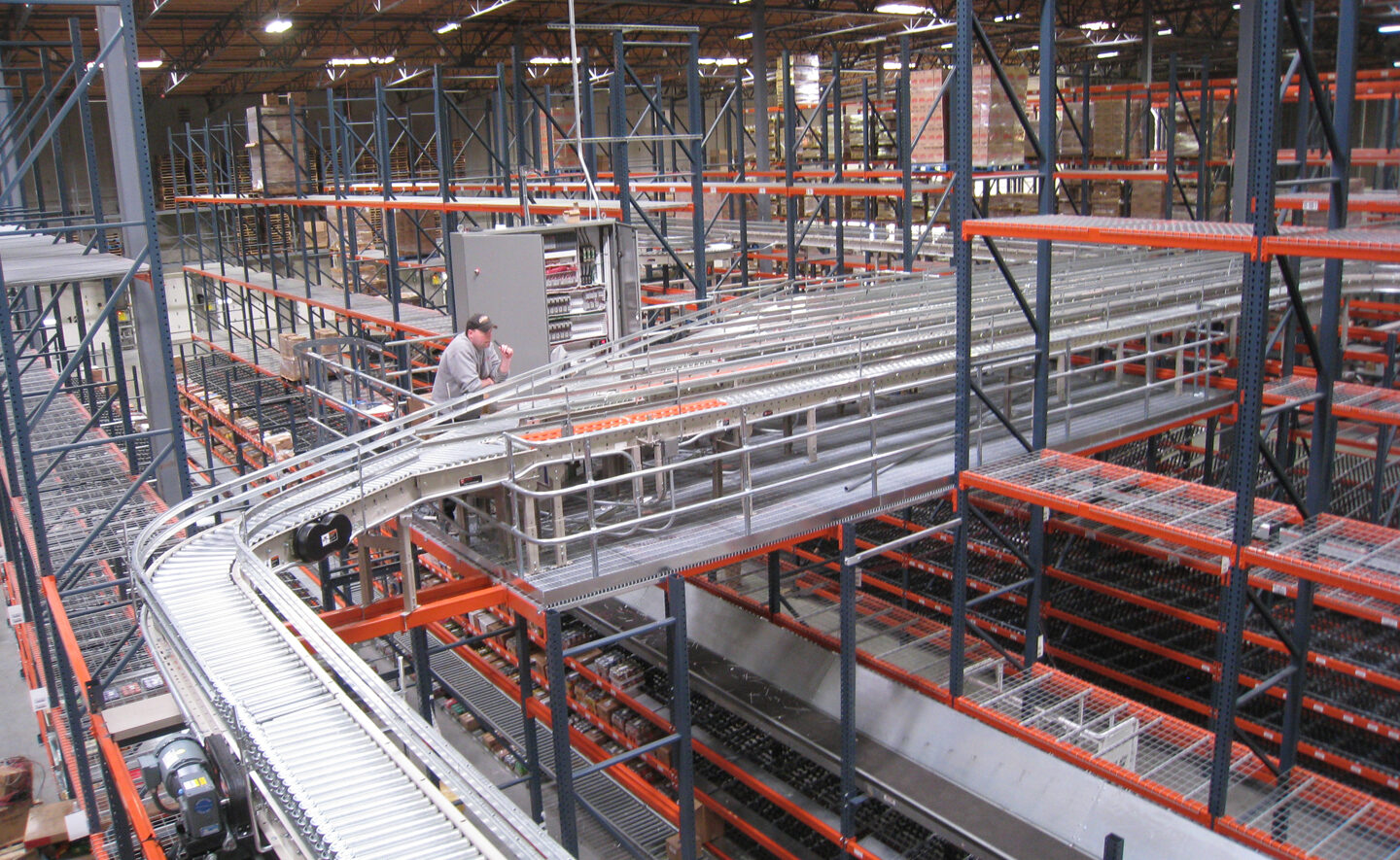
ELECTRIC POWERED CONVEYOR SYSTEMS
A powered conveyor is motorized and driven by either electric or pneumatic power systems. They are commonly used to transport pallets and packages from one point to another, quickly and safely. There are several types to choose from and each operates a little differently.
ROLLER CONVEYOR SYSTEMS
CHAIN DRIVEN CONVEYOR SYSTEMS
ACCUMULATION CONVEYOR SYSTEMS
SORTATION CONVEYOR SYSTEMS
PALLET CONVEYOR SYSTEMS
VERTICAL RECIPROCATING CONVEYOR SYSTEMS (VRC)
SPIRAL INCLINES AND DECLINES
THINGS TO CONSIDER WHEN CHOOSING A CONVEYOR SYSTEM
- Carton / Tote Sizes- Length x Width x Height are critical.The maximum to minimum carton range needs evaluation for convey-ability. Carton weights and load placement in the box or tote are key factors for transfers, inclines, and corners. Are you needing to transport heavy materials, average weight, or ultralight cartons? The weight ranges affect transport and carton damage.
- What types of materials, pallets, and/or containers will you need to be transported down the conveyor lines that need to be taken into consideration? Will pallet sizes vary? Pallet bottom boards in relation to the roller conveyor are important for smooth flow & transfers.
- Do you handle or manufacture any materials or products that can harm the conveyor system that needs to be taken into consideration? For example, temperature, humidity, chemicals, wash down, bottle breakage, and solvents are all items to consider in the survey process.
- Review the layout of your facility to determine where the conveyor system needs to be placed and where it may need to elevate, fall, stop, or make turns.
- Can the conveyor system be added on to or revised if your needs change down the road?

CAN YOUR WORKFLOW BE IMPROVED WITH CONVEYORS
Our systems experts can help you analyze your current workflow and determine if, and which conveyor system can help increase your productivity and decrease your labor costs. We look forward to discussing your challenges, and coming up with a solution.
CONTACT US TODAY

